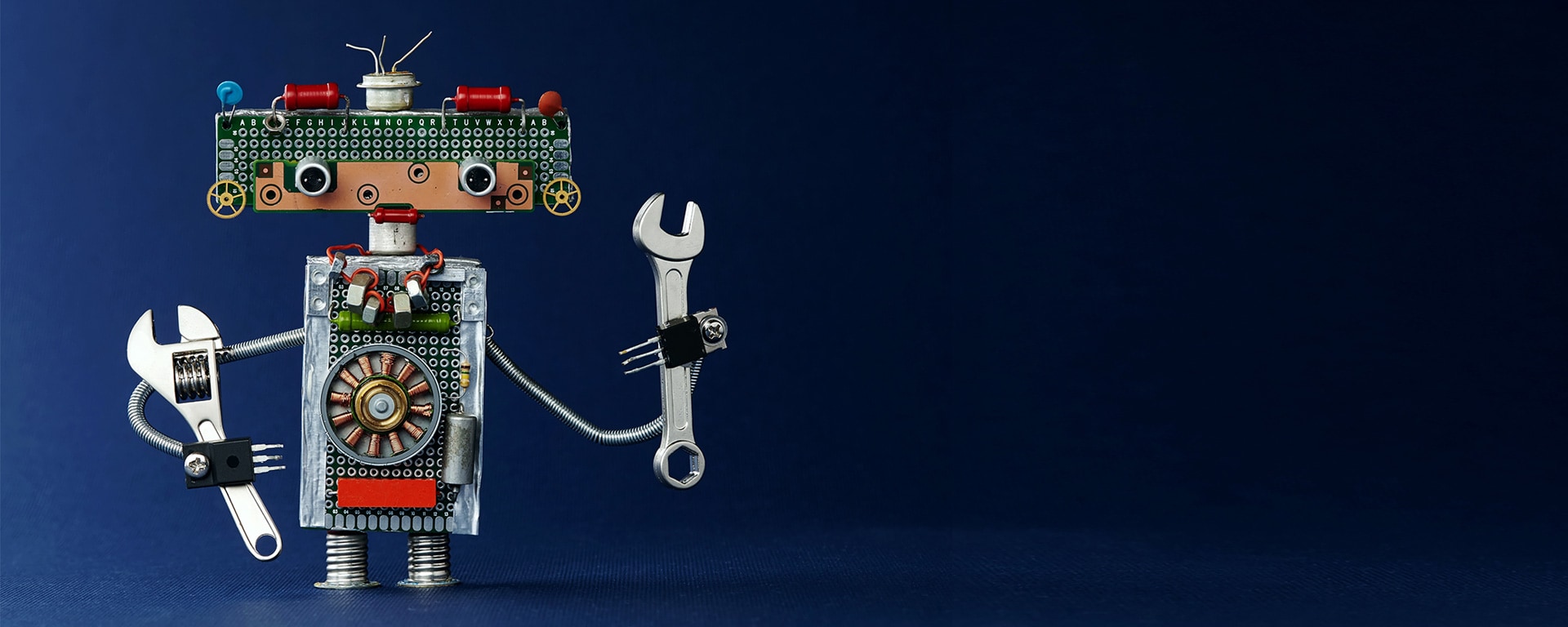“Digital is better”? How robots and digital technology are changing the shopping experience
Digital transformation in retail: Service robots as shopping attendants
Pepper’s appearance in a Californian tech store didn’t just put the technology to the test, but the passing shoppers too. The robot not only engaged passers-by in conversation, it also suggested taking a selfie together. Will this become a regular sight soon? Humanoid robots will be able to give you directions through large and complex stores and also answer simple shopping questions.
An initial survey at Pepper’s workplace showed a 70 percent increase in foot traffic during the week Pepper was online—although only as a support to the non-robotic (also known as “human”) service team. As always, most people consider interactions with people more valuable.
From virtual changing rooms to digital in-store technology
Will virtual changing rooms solve bad lighting issues and long queues? We’ll have to wait and see. Of course, we can already see how digital technology is transforming the shopping experience today. E-Commerce vendors are already giving customers the opportunity to upload photos of themselves and try on clothes virtually in online stores.
In the coming years, industry experts predict that the online and offline worlds of the retail sector will become even more interlinked. The digital transformation of the retail sector means touchscreens, intelligent mirrors as digital changing rooms and interactive window displays could make their way into stores and revolutionize the shopping experience.
Click & Collect
A further trend which proves the increasingly mixed online and offline retail worlds is Click & Collect. Here, consumers are given the chance to inform themselves of a product online and order it in an E-Shop. You can then pick up your goods at the nearest branch.
This means you can receive personal shopping advice, try on clothing, or skip the queue, all while saving on delivery costs. For retailers, Click & Collect avoids potential return costs whilst offering digitally-minded consumers more options and a more flexible ordering process, increasing customer satisfaction.
How do retailers see things from the perspective of their customers?
An industry in transition
Be it service robots, digital in-store technologies, or click & collect offerings, these trends give an idea of how our daily lives are changing as digitalization progresses. If we think back only ten years, changes in our buying habits have gone almost unnoticed (self-serve checkouts, anyone?) and with them, an entire industry.
Understanding your own company from the customer's point of view
So what attracts digital natives and flighty customers to retail offers? Retailers face the challenge of competing against established competitors, internet corporations such as Ebay and Amazon, and new startups—and this competition is often just a click away.
This is where the customer perspective comes into play. Of course, it remains to be seen whether service robots, digital dressing options and Click & Collect offers will actually positively influence an individual’s purchasing decision. But we know consumers already appreciate a coherent, cross-channel customer journey that integrates online and offline offers and is geared towards a positive customer experience.
Such an omnichannel or multichannel approach requires a critical view of the underlying business processes. For example, a Click & Collect offer really only adds value if the ordered goods can be picked up promptly and the customers do not need additional routes to the store. This, in turn, only works if the corresponding internal processes overlap and are aligned to a coherent customer experience.
A successful omnichannel strategy means teamwork
This means that in order to meet their customers' needs, retailers should not rely solely on new digital technologies and a coherent omnichannel strategy. Equally important is cross-departmental communication and continuous process improvement. Only under these conditions, for example, is it possible to integrate a Click & Collect offer as a contact point in the customer journey.
To understand customer needs and the ideal customer journey, it is important to have a holistic view of the entire organization and operations. It is not until the company processes are synchronized behind the scenes and aligned with the customer experience that an excellent service at every contact point of the customer journey is actually conceivable.
Remember, the customer journey is also changing. So before you send a service robot to your stores to take a selfie with their customers, ask yourself critically, "Do I have a selfie of my business processes?"
Want to learn how retailers can successfully use Business Process Management to improve their customer experience in the long term? We recommend this article on How Process Management Helps Retailers Increase Operational Efficiencies by Signavio COO Mark Holenstein.

